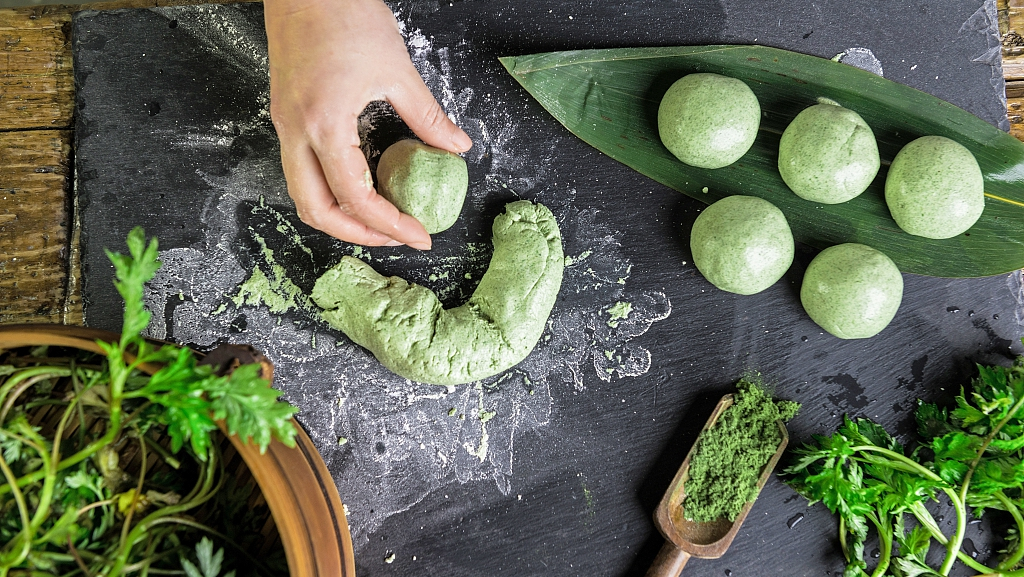Artemisia argyi, also named Chinese mugwort, is about one meter tall, with ovate, deeply-divided leaves that have a silvery fuzz on their underside. It has a strong sage-like smell and slightly bitter taste.

Chinese mugwort has a silvery fuzz on their underside. /VCG Photo
Chinese mugwort has a silvery fuzz on their underside. /VCG Photo
The buds and seedlings of Chinese mugwort are edible. In China, around the time of the Qingming Festival in spring, the plant is pounded and put in a specialty dish, green rice balls or "Qingtuan" in Chinese, as a colorant.

Around the Qingming Festival, the plant is pounded and put in green rice balls as a colorant. /VCG Photo
Around the Qingming Festival, the plant is pounded and put in green rice balls as a colorant. /VCG Photo
It is also a widely used herb in traditional Chinese medicine, associated with the liver, spleen, and kidney meridians. Its main functions are to warm the meridians and stop bleeding and pain. Burning the dried Chinese mugwort on specific acupuncture points on the patient's body is a healing method in the theory of traditional Chinese medicine. The dried plant is rolled up like a fat cigar or on top of an acupuncture needle.

The dried Chinese mugwort is rolled up like a fat cigar and burned on specific acupuncture points on the patient's body is a healing method according to the theory of traditional Chinese medicine. /VCG Photo
The dried Chinese mugwort is rolled up like a fat cigar and burned on specific acupuncture points on the patient's body is a healing method according to the theory of traditional Chinese medicine. /VCG Photo
Besides, the Chinese mugwort is used as a pesticide. After dried and pulverized into a powder, it is also a high-quality feed additive for livestock and poultry.
The Chinese mugwort has a strong tillering ability, which is its main breeding mode of artificial cultivation.
China's Flora Tour
From the wetlands along the coast to the dense rainforests hidden in southwestern China, all boast an array of plant species. In this series, CGTN will go on a tour to learn about some of the most representative floras in different provinces and see how they live in harmony with the local geography and climate.
(Cover image via VCG, designed by CGTN's Liu Shaozhen.)
(If you want to contribute and have specific expertise, please contact us at nature@cgtn.com)